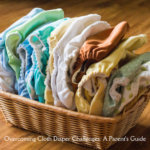Choosing the right crib for your baby is one of the most important decisions you’ll make as a parent. It’s not just about finding something that looks good in the nursery—it’s about ensuring your little one’s safety and comfort during those precious early months and years. In this guide, we’ll explore the key considerations for selecting a crib that meets both safety standards and your baby’s needs.
How to Choose the Right Crib
Expert Opinion: Being a Father of 3 Kids
As a father of three, I’ve navigated the world of crib selection multiple times, each experience offering valuable insights into what works best for both baby and parent. My advice is simple: prioritize safety above all else. Invest in a crib that meets rigorous safety standards, even if it means spending a bit more. Look for features that enhance convenience and comfort, such as adjustable height settings and quality mattress options. And don’t forget to trust your instincts—after all, no one knows your baby better than you do. By following these tips and drawing on your own parental intuition, you can choose the perfect crib for your growing family.
Understanding Safety Standards
Before diving into the world of crib shopping, it’s essential to understand the safety standards that govern crib design and manufacturing. Regulatory bodies such as the Consumer Product Safety Commission (CPSC) set guidelines to ensure that cribs meet specific safety requirements. Look for cribs that comply with these regulations and carry certifications such as the Juvenile Products Manufacturers Association (JPMA) seal of approval. Additionally, prioritize cribs made from non-toxic materials to minimize exposure to harmful chemicals.
To delve deeper into safety considerations, learn about the best baby feeding products for your newborn.
Evaluating Crib Features
When evaluating crib options, consider features that enhance both safety and convenience. Look for cribs with adjustable height settings, allowing you to lower the mattress as your baby grows and becomes more mobile. For small nurseries, consider space-saving crib solutions such as corner cribs or mini cribs. Convertible cribs are another excellent option, as they can be transformed into toddler beds or even full-size beds, providing long-term value for your investment. If you’re expecting twins or multiples, explore cribs specifically designed to accommodate multiple babies safely.
Assessing Comfort Factors
In addition to safety considerations, comfort is crucial for ensuring a restful night’s sleep for your baby. Start by choosing the right crib mattress, considering factors such as firmness and breathability. Organic crib mattresses are a popular choice for parents seeking natural, chemical-free sleep surfaces for their babies. Pairing the mattress with quality crib bedding, including fitted sheets and breathable bumpers, further enhances comfort while reducing the risk of suffocation or entrapment. For families on the go, portable cribs offer a convenient solution for travel without sacrificing comfort or safety.
Choosing the Right Crib for Specific Needs
Every family’s needs are unique, so it’s essential to choose a crib that aligns with your specific requirements. If you’re short on space, look for cribs designed for small rooms or apartments, such as mini or folding cribs. Budget-conscious parents can find affordable crib options that don’t compromise on safety or quality. For those with a keen eye for design, stylish cribs are available in a range of finishes and styles to complement any nursery decor. Families with multiple children may opt for compact cribs designed to accommodate twins or siblings comfortably.
Avoiding Common Mistakes
Assembling a crib correctly is critical for ensuring its safety and stability. Follow the manufacturer’s instructions carefully, and double-check all hardware to ensure a secure fit. Use a crib setup checklist to ensure that all safety measures are in place before placing your baby in the crib for the first time. Additionally, familiarize yourself with common crib buying mistakes, such as choosing a crib with inadequate weight limits or failing to account for proper mattress support. By being proactive and informed, you can avoid potential hazards and create a safe sleep environment for your baby.
Safety Notes
- Always place your baby on his or her back to sleep.
- Make sure the crib has not been recalled by the manufacturer.
- Check all screws and hardware regularly and tighten them if necessary.
- A bare bed is best. Don’t place bumper pads, soft bedding, or soft toys (blankets, fluffy comforters, pillows, plush toys) in your baby’s crib. Any of these items could cause your baby to suffocate.
- Remove mobiles when your baby starts to push to his or her hands and knees or when your baby turns 5 months old, whichever comes first.
- Do not place a crib near a window or drapes. Your baby could fall or become entangled in window blind and drape cords.
- Remove bibs and necklaces from your baby’s neck before putting your baby in the crib.
- Do not hang toys by strings.
- Make sure sleepwear and sheets are flame retardant.
Conclusion
Choosing the right crib is a significant decision for any parent, with safety and comfort being top priorities. By understanding safety standards, evaluating crib features, and considering your family’s specific needs, you can make an informed choice that promotes healthy sleep and peace of mind. Remember to prioritize safety at every step of the process, and don’t hesitate to seek guidance from trusted sources if you have any questions or concerns. With the right crib in place, you can create a cozy and secure sleep environment where your baby can thrive and grow.







